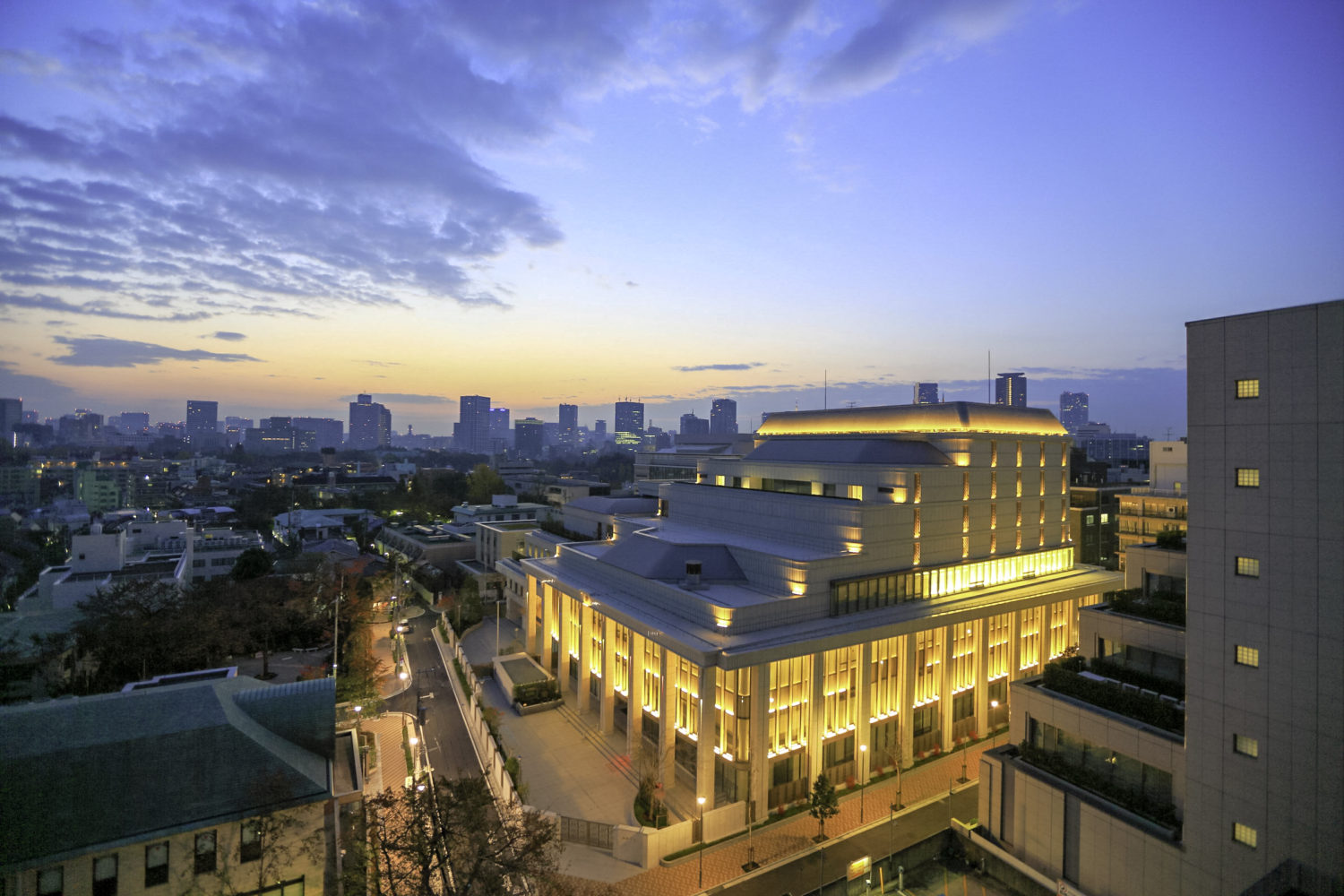Living Buddhism: This year has been challenging on many fronts, with the COVID-19 pandemic, the economic fallout and the racial injustice we see in American society. Ikeda Sensei recently underscored the importance of the next 10 years, toward the 100th anniversary of the Soka Gakkai’s founding, as a time of change.
He says in part: “The decade from the Soka Gakkai’s 90th anniversary to its centennial in 2030 will be crucial. We must be even more determined to show victorious proof of our own human revolution, to transform all great evil into great good and to effect a powerful change in the destiny of all humankind.”
Why are these next 10 years so crucial?
 SGI-USA General Director Adin Strauss: From the outset, the Soka Gakkai has been a movement for humanism. And the basic element of humanism is to enable human beings, as well as the environment around them, to not merely survive, but to prosper.
SGI-USA General Director Adin Strauss: From the outset, the Soka Gakkai has been a movement for humanism. And the basic element of humanism is to enable human beings, as well as the environment around them, to not merely survive, but to prosper.
Currently, we are facing existential threats to humanity. In these next 10 years, we must enable the philosophy of Soka humanism to take deeper root in society around the world. In a speech in Kansai in 1997, Sensei shared these words about his hopes for our movement in the 21st century and beyond:
The first half of the twenty-first century will mark … a time for consolidating the groundwork for peace in Asia and throughout the world.
Looking further ahead to the latter half of the twenty-first century—with our aim of making it a “century of life”—I trust that respect for the dignity of life will be established as the underlying spirit of the age and of the world. …
These are, of course, not “prophesies.” Rather, they are my determinations for the future arising from my wholehearted prayers for peace.[1]
Sensei is diligently fighting to ensure that the latter half of the 21st century will be a “century of life.” As his disciples and successors of the kosen-rufu movement, we must share that same commitment and vision of the future.
Sensei views every moment as the most crucial moment. He often cites this passage from The Record of the Orally Transmitted Teachings: “If in a single moment of life we exhaust the pains and trials of millions of kalpas, then instant after instant there will arise in us the three Buddha bodies with which we are eternally endowed.”[2] This is how he fights every day, as if to accomplish a week’s worth of effort in a single day. Our fight to advance peace over the next ten years, toward 2030, might seem long. But it would be a mistake to think we can stop after that. Throughout our lives it’s crucial that we make the most of each day, striving toward our next goal, to make our mentor’s vision a reality.
What does it mean to show “victorious proof of our human revolution” during this time?
Adin: Buddhism stresses the difference between the theoretical and the actual. Nichiren Daishonin’s brilliance lay in his ability to actualize something that was abstract. He took the notion that “we are all Buddhas” and made it something that we could manifest in daily life through chanting Nam-myoho-renge-kyo.
As is described in volume 6 of The Wisdom of the Lotus Sutra, in the “Former Affairs of King Wonderful Adornment” chapter, Sensei talks about two sons who led their father to enlightenment by displaying their “supernatural powers.” Sensei explains that “supernatural powers” refers to both sons’ human revolution—the profound change in their behavior and actions—as a result of practicing Buddhism. Astonished by their transformation, the father decides to take faith.
For us, today, this is the moment when we must display our own “supernatural powers”—the astonishing power of practicing Buddhism—in our lives and show great proof of human revolution through our behavior as human beings. At a time when people are desperately searching for a beacon of hope, part of that human revolution is introducing others to Buddhism to increase the forces of good. When we are able to show such actual proof in our lives, we will feel a tremendous upsurge of joy and confidence, and call forth even more benefits.
How is our human revolution related to transforming “all great evil into great good” and changing the “destiny of all humankind”?
Adin: In Unlocking the Mysteries of Birth and Death, Sensei speaks about this exact point. He states:
If a group or nation shares common but mistaken beliefs, they will share a common fate. Epidemics, for example, arise from commonly held misunderstandings about diet, sanitation and such. While recognizing the collective nature of such dilemmas, Buddhism asserts that the remedy for all problems begins with the individual’s change in perspective and the actions he or she takes based on that inner reformation. As each of us awakens to our limitless power within, we can exert an ever-greater influence on our environment and bring about a change in the minds of our fellow human beings that can effect a change in the destiny of all humankind.[3]
At the core, what enables us to “transform all great evil into great good” and “change the destiny of all humankind” is faith. Evil, in Buddhism, can be defined as anything that degrades or devalues life. We can transform evil by first chanting Nam-myoho-renge-kyo based on a vow to awaken those around us to their inherent potential. Changing the destiny of all humankind starts with changing ourselves. It starts by praying to the Gohonzon and manifesting supreme wisdom, courage and compassion to take the right action based on that inner transformation.
In creating a vision for the next 10 years, there are two aspects to consider—on the macro level, in terms of American society, and on the micro level, in terms of our own lives, families and organizations.
Some may find it difficult to create a long-term vision when the current reality is so challenging. How can we create a vision for ourselves, our local SGI organizations and communities?
Adin: The implication behind this question is that there is a separation between our long-term vision and what is in front of us. Every morning and evening, we recite gongyo and chant Nam-myoho-renge-kyo. The last line of the “Expedient Means” chapter that we recite translates as “consistency from beginning to end.” This concept teaches us that our state of life permeates and is reflected in every aspect of our life. For example, if you are changing jobs, the way you finish one job will determine how you start your new one.
Nichiren Daishonin states: “If one cannot cross a moat ten feet wide, can one cross a moat that is twenty or thirty feet wide?”[4] In other words, by challenging and winning where we are right now, we can achieve our larger vision and dreams.
Sensei reminds us: “The expansive world lies not in some distant place; it exists right where you are. That is why you need to win where you are right now. Today’s victory is linked to your eternal victory.”[5]
It’s important to have big dreams. But rather than feel pressured, we should feel appreciation: Today is the day I get to fight for my dream. I really appreciate having this day. The accumulation of our daily efforts is what enables us to open the path to victory. Our victory is not linear. We don’t become a little bit happier and receive a little more benefit every day. Sometimes, our victory looks like, I’m stuck, I’m stuck, I’m stuck, and then we take a significant leap forward.
In Nichiren’s writing “The Great Battle,” he states: “It has been twenty or more years now since I found myself in that situation and began the great battle. Not once have I thought of retreat. Among my disciples and followers, however, those who are cowards have for the most part either given in or retreated at heart.”[6] Faith is determined by whether we can continue advancing even when it seems like our circumstances are not changing. Our victory is determined by our perseverance in faith.
Sensei has spoken many times regarding the significance of 10 years as a time to polish yourself. Here’s one example: “Never forget your determination to patiently develop yourselves now, so that in ten years’ time you will be able to show everyone how much you have achieved.”[7]
How do you break down a large goal so that it is achievable, while staying on track?
Adin: The Soka Gakkai tradition is to first decide what your victory will be, resolve to achieve it and then to think about what steps need to be taken. In any case, it is important to enjoy the process. It would be a big mistake to think, we will suffer and endure the next 10 years, and then we’ll have a breakthrough and become happy come November 18, 2030. The challenge and victory should both be regarded as great joys.
We should ask ourselves these questions: Are we defeated or controlled by the environment? Are we deploring our circumstances? Or are we people who keep our life force steady, seek our mentor and have confidence in what Nichiren and Sensei are saying? Is disrespect or absolute respect at the core of our lives? The way we stay on track is by walking the path of the oneness of mentor and disciple. If you stay on track with your mentor, you will win.
What do you believe would represent significant progress for America in the next 10 years?
Adin: Everyone should have their own vision for their SGI community. My personal dream is that we triple the size of the SGI-USA in the next 10 years and that we have an SGI center in every state so that the members can practice freely wherever they are. I am also praying that our country becomes a bastion from which the teachings of Nichiren Buddhism and Soka humanism will spread to every corner of the world. That is SGI-USA’s unique mission. Our country does not lack for challenges at the moment. But Sensei is completely aware of what those challenges are and believes we are the model for the world not despite our problems, but because of them.
What is the role of the youth in this regard?
Adin: Sensei states: “Kosen-rufu is the struggle to ensure that the brilliant light of the Mystic Law endures forever and to help all people attain enlightenment. Naturally, it is an endeavor that cannot be achieved in a single lifetime. For that very reason, we must ensure that the Lotus Sutra’s fundamental aim of leading all living beings to the Buddha way is never lost but passed on to future generations. The path of mentor and disciple is dedicated to keeping alive this essential wish of the Buddha.”[8]
Our youth are in the vanguard. I hope that the youth will develop activities that are most fitting and appropriate for them, and are unconstrained by the fetters of the past. If we stick with daimoku, the Gohonzon and Sensei, our victory is guaranteed!
Read “Paving the Way to Changing the Destiny of Humankind Through Our Own Human Revolution” here.
References
- The Wisdom for Creating Happiness and Peace, part 3, p. 363. ↩︎
- The Record of the Orally Transmitted Teachings, p. 214. ↩︎
- Unlocking the Mysteries of Birth and Death, p. 72. ↩︎
- “Letter of Petition from Yorimoto,” The Writings of Nichiren Daishonin, vol. 1, p. 808. ↩︎
- Buddhism Day by Day, p. 314. ↩︎
- WND-2, 465. ↩︎
- The New Human Revolution, vol. 9, p. 165. ↩︎
- August 2014 Living Buddhism, p. 22. ↩︎
You are reading {{ meterCount }} of {{ meterMax }} free premium articles

